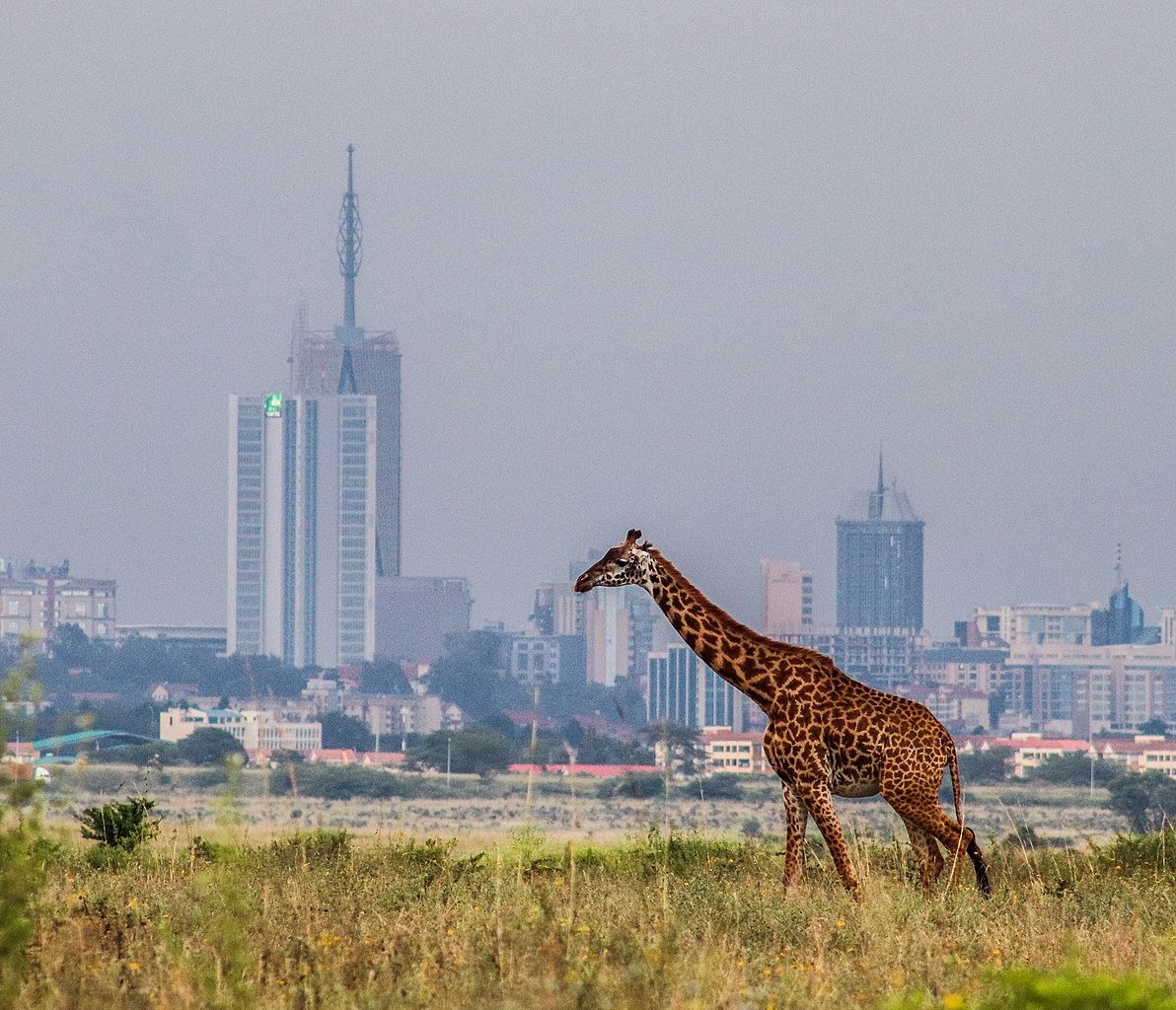The only one of its kind in the world within a capital city, the Nairobi National Park is a short drive out of Nairobi’s central business district. The park covers just 117 kilometer square (44 square miles) and consists of typical original Kenyan landscape such as plains, forests, steep gorges and lush vegetation along the banks of the Embakasi River. It has a high altitude, savannah landscape with acacia trees dotting across the open plains. The varied ecosystem and the backdrop of the city scrapers, play host to a wide variety of wildlife including the endangered black rhino, lions, leopards, cheetahs, hyenas, buffaloes, giraffes and diverse birdlife with over 400 species recorded. There are no elephants in this park due to its small size
Nairobi National Park is Kenya’s most accessible yet incongruous safari experience with abundant wildlife that can, in places, be viewed against a backdrop of city skycrapers and planes coming in to land at the nearby airport. Remarkably, the animals seem utterly unpertubed by it. The park is home to the world’s densest concentration of black rhinos. Lions and hyenas are also commonly sighted but you will need a bit of patience to spot resident cheetahs and leopards. The parks closeness to the city of Nairobi means it is very ideal for visitors who want to experience a one day safari without having to travel and stay overnight elsewhere. Visitors on business to Nairobi can easily squeeze a few hours in their schedule to have a glimpse of the park and its offerings.

